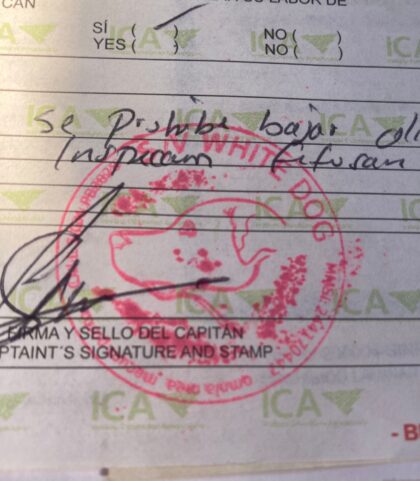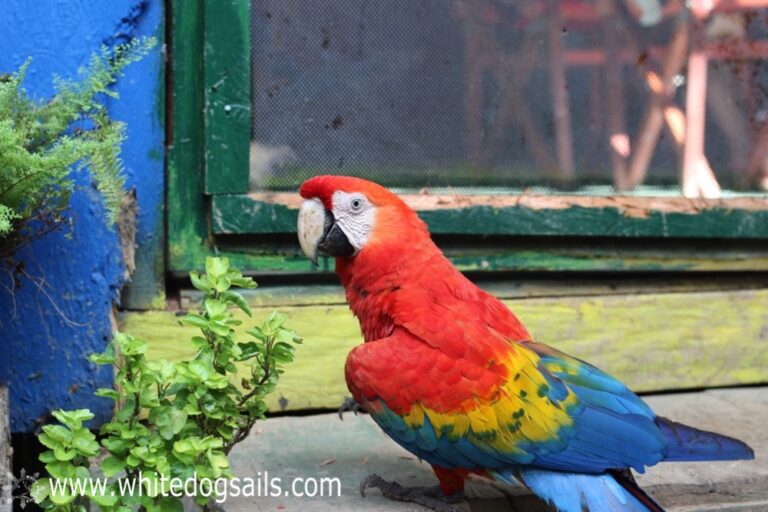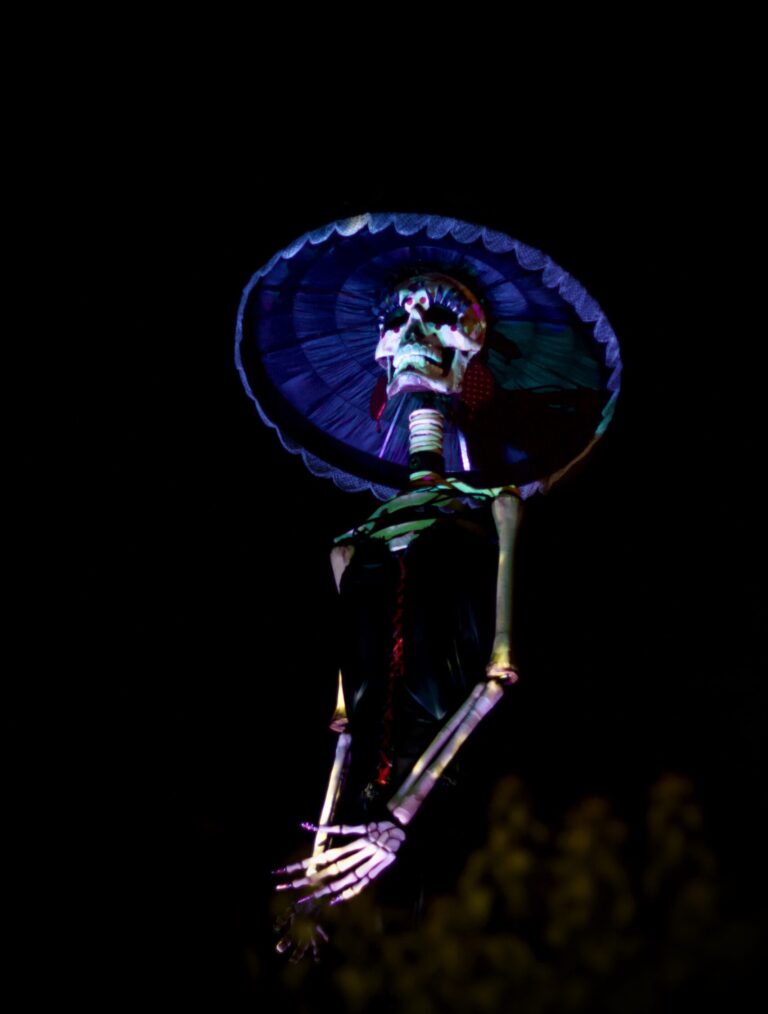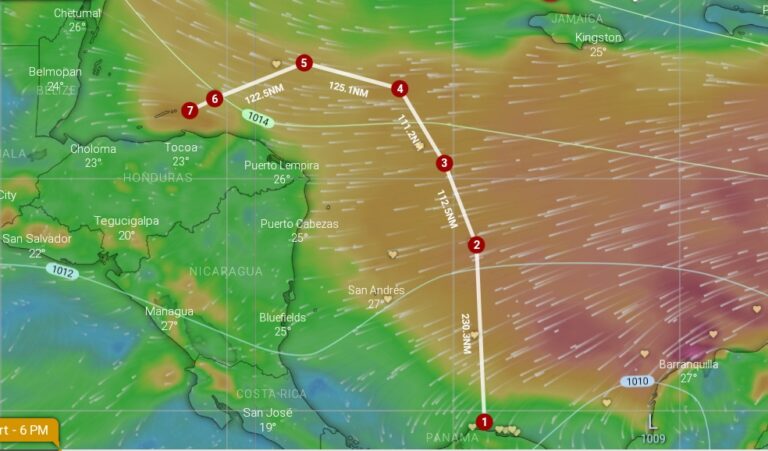Sailing in Colombia: fees, Marina Puerto Velero
Entry fees Colombia
Please note that this is our experience, not a general rule. There are stories on the internet about agents in Colombia, and we heard about quotes of 600USD as well. Probably you could avoid some costs if you speak Spanish and you do it by yourself. Marinas offer a deal when you stay longer. Marina Puerto Velero offered no agent fee for three months stay in the marina. We cut it down to two months with the same monthly rate. Two months was not a problem for us, as we intended to travel around Colombia for a month anyway. But I can imagine that some might not want to stay that long in any marina.
We paid for official paperwork as follows: (3 persons/ 41ft. monohull)
- Temporary import: 46USD,
- Cruising permit 104USD,
- Immigration 75USD,
- Exit ZARPE 10USD
We had our doubts about the Immigration fee, as it is not stated anywhere that there is a fee at all. To be honest, we have never received any bills for mentioned documents, so we don’t know if we paid only official costs or some hidden agent fee. But it was all not that much, and Colombia is definitely worth it.
The whole entry procedure went very smoothly but was super official. We didn’t have to drive anywhere. It took place at the front desk in the marina. All crew had to be present. There was maybe a bit more paperwork than in Trinidad, but we didn’t have to fill in any forms, just sign. Funny thing – officers when they noticed that we have a boat stamp, they requested it on all official documents! That looked hilarious – a big red-ink stamp with the head of the dog. All the paperwork was then taken back to Barranquilla. Immigration was ready within a day (they took our passports and left us with stamped copies). The rest took about 10 days (temporary importation – 2 weeks). We didn’t push to speed it up, as we were already deep in the Colombian Andes.
EDIT VISA extension fees
We had to extend our visas for 90 days. It can be done via website. It took us a day, but we have heard that it might be up to a week, so it is advisable to start the procedure earlier. If you miss the expiry date on your visa, the whole procedure is very difficult.
European citizens don’t have to pay anything for extension, US citizens – 96k COP (25U$D) per person.
Marina Puerto Velero
This is not a pilot book description, just the “user experience”. There are not many marinas in Colombia. Puerto Velero is located about halfway between Santa Marta and Cartagena. The bay was recognized by Spanish captains and has been frequently used to anchor merchant ships since XVI century. It is not very popular among cruisers though. The location of that marina would make a perfect stop for the night on the way from Santa Marta to Cartagena. Especially during the heavy wind season (December to February). The night passages might be challenging then, due to the stronger night breeze. However, the marina has a policy of a minimum stay of 4 nights, which is ridiculous. You can easily anchor overnight. I recommend staying closer to the peninsula, just by the marina. There you will get fewer gusts. Night gusts are really vicious from 0 to 30+ within seconds, not a steady wind (more about sailing in that area, you can find it HERE).
We spent two months there, including leaving the boat, in the water, for a month. What are our observations, conclusions, and a little bit of local knowledge?
LOCATION Puerto Velero
It is a sheltered bay with calm water but very windy as the peninsula is a flat, sandy bar. It is open from the SW. Not often, mostly in June-November, SW wind creates brutal waves (“las olas brutales”) along the bay (not our experience, but local knowledge). Due to the location, it is a perfect spot for kite surfers or windsurfers (plenty of kite surfers in the bay). Thanks to the heavy breeze, it is also not that hot inside the boat, even chilly during the night. Peninsula is covered with black sand, and due to that strong breeze, wet sand is everywhere on the boat. Meaning: if you leave the boat there – take down your sails, cover everything because it will get dirty! November – end of the wet season, expect vast amounts of jejenes – local sand flies, vicious, invisible vampires leaving bloody marks on your legs up to knees. Everybody wears long pants then, and it should have been a clue for us, but lesson learned – always watch locals – they know stuff. In December, due to strong winds, hardly any insects, especially mosquitoes.
MARINA Puerto Velero
Marina is reasonably good, with the best asset – the dock manager, Miguel (who speaks good English and is super responsive, easy to reach via Whatsapp or in his office) and his dock crew. There is one person at the front desk who speaks English. Her name is Cristina, but she is not always there, so it’s better to make an appointment. All facilities in the marina, including showers and laundry service (about 27k COP/one load), are very decent, except for the restaurant or rather a beach bar – food is quite disappointing, a breakfast omelet is good. The swimming pool is new, very nice and guarded. The beach – if you like black sand and therefore murky water – is OK. The resort is a safe and quiet place with not many people during the week (busier during weekends), but in general, you are not exposed to the crowds walking on the dock and picking inside.
REPAIRS Puerto Velero
There are facilities to haul out (which we haven’t used, but the lift looks new) and some workshops, but no chandlery, the closest one is in Barranquilla, and getting there is complicated.
PROVISIONING and COMMUTING Puerto Velero
No grocery shops around. There are few in Puerto Colombia, but big shopping only in Barranquilla, which is about 30km away. Taxi costs about 150k COP for both ways. You can take a bus, but you have to first get to the main road, which is about 5km from the marina. They used to have a shuttle, but this was before covid. It also doesn’t look like it’s gonna restart any day soon. Ask the marina before going there, maybe they will restore that service. That would make a huge difference. I wouldn’t recommend that place for people staying aboard for a long time though. Groceries are a real nightmare! We tried to arrange some online shopping with delivery with big shops like PriceSmart, Exito, Jumbo, etc. but the distance is too big. We spoke to the other cruisers who stayed there for a longer time and some of them bought a car, or motorcycle (easier to sell later), we also left some suggestions to the management to arrange online shopping and delivery, or shopping days – like in Chaguaramas, Trinidad.
Conclusions
It was a good idea to leave the boat in Marina Puerto Velero, as it was well taken care of by the dock crew. They check your mooring lines and fenders daily, even added a few more when the strong winds were forecasted. There is a night guard, who is walking on the dock, not just sitting. We had a report on Whatsapp from Miguel every few days, unrequested – just to keep us comfortable. As for growth on the hull, it was surprisingly low. We heard how bad it is in Cartagena. In Marina Puerto Velero, we didn’t bother to clean the hull before sailing to Cartagena. Growth was way less than in Aruba or Martinique. The current situation with groceries was a drag and a show stopper for us, so we put sails up and sailed to Cartagena for big provisioning before Panama.
We are also on Noforeignland – sailors community.
Sailing in Colombia Sailing in Colombia Entry fees Colombia , entry fees colombia









Thanks for providing details about the clearance fees. This is very useful.